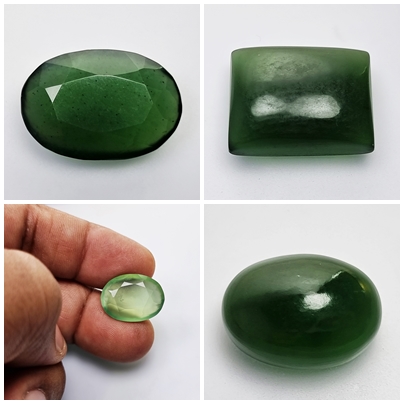Serpentine: Gemstones Information
Serpentine is a unique and versatile mineral renowned for its vibrant green color, waxy luster, and various metaphysical and healing properties. Here, we’ll delve into the detailed information and benefits of serpentine, covering its properties, uses, occurrences, and the advantages it offers for physical, emotional, and spiritual well-being.
Properties of Serpentine:
Composition: Serpentine is primarily composed of hydrated magnesium silicate, often with traces of iron, aluminum, nickel, and chromium.
Color: It exhibits a wide range of green hues, from light green to dark green, sometimes with mottled or streaked patterns.
Luster: Serpentine typically displays a greasy or waxy luster, giving it a distinctive appearance.
Hardness: Its hardness varies between 2.5 to 5.5 on the Mohs scale, making it relatively soft compared to other minerals.
Texture: Serpentine may have a fine-grained to coarse-grained texture and can occur in fibrous or scaly forms.
Uses of Serpentine:
Ornamental Stone: Serpentine is widely used in jewelry and decorative objects due to its attractive green color and unique patterns. It is often carved into beads, cabochons, and sculptures.
Architectural Stone: Due to its durability and aesthetic appeal, serpentine has been used as a building stone for architectural features such as columns, flooring, and countertops.
Carving Material: Sculptors appreciate serpentine for its workability and varied colors, using it to carve figurines, statues, and decorative items.
Industrial Applications: In industry, serpentine serves as a source of magnesium and is used in the production of refractory materials, ceramics, and insulation products.
Metaphysical Uses: Serpentine is believed to possess various metaphysical properties and is used for healing, meditation, and spiritual practices.
Benefits of Serpentine:
Emotional Healing: Serpentine is thought to aid in emotional healing by promoting inner peace, releasing stress, and fostering a sense of tranquility. It is believed to soothe emotional imbalances and alleviate feelings of anxiety and depression.
Physical Healing: Some believe that serpentine has physical healing properties and may help alleviate symptoms of various ailments, including detoxification, digestive issues, and muscle tension.
Energy Cleansing: Serpentine is often used for energy cleansing and purification. It is believed to clear negative energies from the environment and restore harmony and balance.
Chakra Alignment: Serpentine is associated with the heart chakra, and it is believed to facilitate the opening and balancing of this energy center. It may help in fostering love, compassion, and empathy.
Spiritual Growth: Serpentine is thought to enhance spiritual growth and awareness. It is believed to deepen meditation practices, facilitate connection with higher consciousness, and promote spiritual awakening.
Occurrences:
Serpentine is found in various geological settings worldwide, including metamorphic rocks, hydrothermal veins, and altered ultramafic rocks. Notable occurrences include California (USA), Italy, New Zealand, Afghanistan, and Canada.
Conclusion:
Serpentine is a versatile mineral cherished for its aesthetic appeal, healing properties, and metaphysical significance. Whether used for ornamental purposes, architectural design, or spiritual practices, serpentine continues to captivate and inspire individuals around the world. Its vibrant green color and unique properties make it a valuable addition to both the physical and metaphysical realms, offering a myriad of benefits for holistic well-being and spiritual growth.





